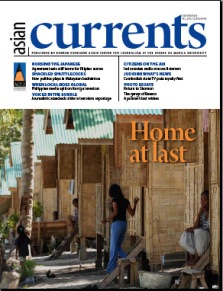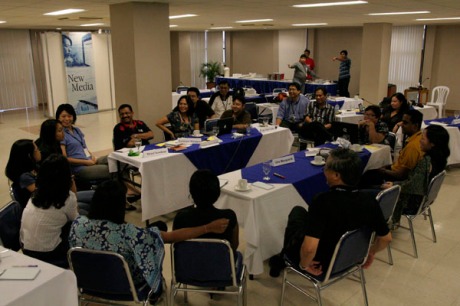ACFJ’s 4th Emerging Leaders Forum Held May 18, 2009
Posted by acfj in Uncategorized.add a comment
The Konrad Adenauer Asian Center for Journalism is holding its 4th Emerging Leaders in Journalism Forum at the Ateneo de Manila University. The two-day forum opened Monday, May 18 at the Convergent Technologies Center (CTC), with some 30 alumni and students of the Ateneo’s M.A. Journalism program attending.
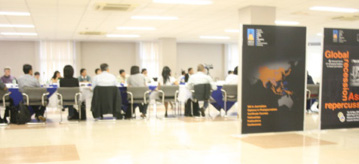 The Forum was tilted “Global recession, Asian repercussions” had as speakers on its first day noted economists and academics, among them three former government offials: former Philippine National Economic Development Authority (NEDA) directors general Solita Monsod and Cielito Habito, and former national treasurer Prof. Leonor Briones.
The Forum was tilted “Global recession, Asian repercussions” had as speakers on its first day noted economists and academics, among them three former government offials: former Philippine National Economic Development Authority (NEDA) directors general Solita Monsod and Cielito Habito, and former national treasurer Prof. Leonor Briones.
The second day is devoted to a multimedia training workshop for M.A. Journ alumni. ###
The UNESCO model curricula for journalism December 9, 2008
Posted by acfj in journalism.add a comment
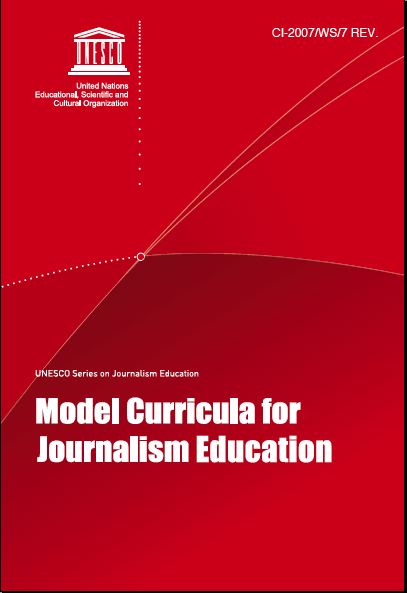 Last year , the United Nations Educational, Scientific and Cultural Organization (UNESCO) came up with a model curriculum for journalism courses, both for Master’s as well as undergraduate degrees. The curriculum was the result of the collaboration many journalism educators from all over the world suggesting what courses would make up a quality journalism education.
Last year , the United Nations Educational, Scientific and Cultural Organization (UNESCO) came up with a model curriculum for journalism courses, both for Master’s as well as undergraduate degrees. The curriculum was the result of the collaboration many journalism educators from all over the world suggesting what courses would make up a quality journalism education.
The M.A. curriculum suggests two approaches–one for those who have had undergraduate journalism training and another for those who don’t.
Below is the UNESCO section on the Master’s degree. You can also download the UNESCO curriculum from here.
(ACFJ alumni, please do go over the UNESCO curriculum. As you know, ACFJ is revisiting its own M.A. Journ curriculim and we’d like to hear your comments on the UNESCO’s suggestions. Looking forward to your comments).
MASTER’S DEGREE
In this document we offer two master’s curricula, one for students with little or no journalism background and one for students with a journalism bachelor’s degree or at least five years journalism experience. Both master’s programs in these curricula combine study in journalism with study in a second subject. We understand that some universities may not be able to offer both programs. If they choose to offer only the program designed for students with a journalism background they could
require other students to take make-up courses in journalism at the undergraduate level prior to admission to the master’s program. We do not recommend a one-year master’s degree in journalism. Nor would we recommend a master’s degree in journalism made up largely of coursework and research in the field of mass communications or mass media studies, though there may be a place in some journalism schools, especially those offering doctoral programs, for a master’s in
the academic study of journalism. In such cases, students would be required to take preparatory courses in scholarly research methods and in the literature of journalism.A master’s degree in journalism promises a significantly higher standard of achievement in students’ knowledge and practice of journalism, as well as in their specialized knowledge of another subject. Students’ evidence-gathering capacity should show an advanced understanding of research methods, and they should write with more depth and style. In all journalism courses, they are expected to reflect deeply and rigorously on the practice of journalism, including the way stories are produced and the relevance of journalistic content for different target groups in society. Master’s students should emerge with the authority, in knowledge and
methods, to work at the most challenging levels of journalism practice.
Students with a good first degree in arts, science and/or other disciplines and little or no previous journalism education or experience, should concentrate in the first year of a two-year master’s program on the acquisition of journalism knowledge and skills of reporting and writing and media editing and production. They should have the opportunity to visit news media organizations and to benefit from lectures and
seminars conducted by practising journalists and from mentorship arrangements. At the same time, master’s students should sustain and develop their interest in the major discipline of their bachelor’s degree or in the subject in which they hope to specialize as journalists.Students with a bachelor’s degree in journalism, and students with a bachelor’s degree in another discipline and at least five years of journalism experience, should concentrate in their first year on enriching their specialized knowledge of one arts or science subject (or combined field of study), while at the same time advancing their journalism knowledge and skills. The aim of this program is preparation for
the journalism of a specialized area; the program may also be adapted for students interested in media management. Students in this program should not be required to revise journalism material they have already studied in their bachelor’s degree or mastered during their journalism experience.For students without previous journalism education or experience, the second year should offer further instruction in reporting and writing and in advanced research methods. For both groups, the second year should deepen their knowledge of their chosen subject area and give them intensive practice in reporting on the subject with authority.
(download model curriculum here).
Asian Currents off the press November 28, 2008
Posted by acfj in ACFJ, journalism.1 comment so far
The Konrad Adenauer Asian Center for Journalism has just come out with the latest issue of Asian Currents, a collection of Masteral projects, photo essays and stories produced by graduates of the Ateneo-ACFJ journalism programs.
This issue of Asian Currents contains excerpts from the Masteral projects of Filipino graduates Marian Trinidad, Odina Batnag, and Joyce Babe Pañares, Som Ratana from Cambodia, Moch Nunung Kurniawan from Indonesia and Rajes Paul Thurai from Malaysia.
The three photo essays are those of Conrado (Charlie) Saceda of the Philippine Star, Koichiro Ota of Mainichi Shimbun, and Vicente Jaime (Veejay) Villafranca, a freelance photojournalist from the Philippines.
The cover photo was taken by Charlie Saceda. It shows residents of the island of Siromon in Zamboanga City following their return after more than three decades away. Siromon residents were forced to flee the island at the height of the fighting between the government and the Moro National Liberation Front in the 1970s. Siromon natives were given nipa huts, called core shelters, by the United Nations’ Act for Peace program.
The Asian Currents editorial board is composed of Werner vom Busch, Director of KAS Media Programme Asia, Dr. Violet Valdez, ACFJ executive director, and Luz Rimban, ACFJ Director for Special Projects and Alumni Relations. Others who put in work for Asian Currents are consultants Yvonne Chua and Isabel Kenny, photo editor Jimmy Domingo, Diploma in Photojournalism program coordinator and Leanne Jazul, layout artist.
Asian Currents is available at the ACFJ office, third floor, Department of Communication, Social Sciences building, Ateneo de Manila University.
ANN peers into North Korea October 2, 2008
Posted by luzrimban in Uncategorized.add a comment
The Asia News Network takes a look inside North Korea in itsAsia News Network webcast, hosted by Ateneo-ACFJ Alumni Association president Jofelle Tesorio. “An insight into North Korea’s utopia” is also the cover story of the ANN publication, Asia News Magazine.
The pull and power of pictures July 30, 2008
Posted by acfj in Uncategorized.add a comment
Photos are an essential ingredient in journalism, and in most cases, they do pull in the readers.
Take the case of the The Boston Globe‘s photoblog called The Big Picture. As this article in the American Journalism Review points out, neither blogs nor photos are new in the online world. But what makes this particular photoblog so popular is the fact that it has created a brand of its own as far as photos are concerned.
The photoblog is only two months old, but it has pulled in some four million viewers, the AJR reports.
In The Big Picture, says AJR, the photos are “giant, dramatic, vivid images that take up the entire computer screen.”
Each picture in the blog represents a specific topic or event, and clicking on will lead you not only to a set of photos on that topic or event, but also on a long list of comments. Really, could you end up spending a lot of time just looking at the pictures and reading the captions plus people’s reactions.
Below are two examples from The Big Picture.

Jupiter's moon Io floats above the cloudtops of Jupiter in this image captured January 1, 2001. The image is deceiving: there are 350,000 kilometers - roughly 2.5 Jupiters - between Io and Jupiter's clouds. Io is about the size of our own moon (NASA/JPL/University of Arizona)
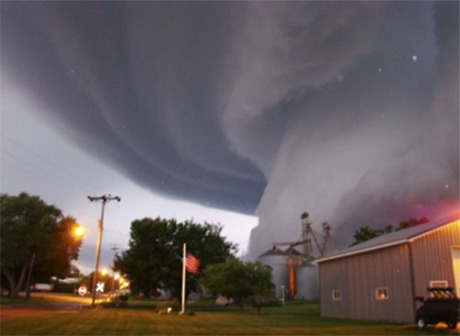
A huge tornado funnel cloud touches down in Orchard, Iowa, Tuesday, June 10, 2008 at 9:04 p.m. The Globe Gazette and Mitchell County Press News reported that Lori Mehmen of Orchard, took the photo from outside her front door. Mehmen said the funnel cloud came near the ground and then went back up into the clouds. Besides tree and crop damage, no human injuries were reported. (AP Photo/Lori Mehmen)
Invitation to the World Press Photo Exhibit July 28, 2008
Posted by acfj in ACFJ.add a comment
All Ateneo-ACFJ alumni are invited to the opening of the World Press Photo Exhibition to be held at The Podium Mall at the Ortigas Center in Mandaluyong City on Friday, August 1, 2008, at 6:00pm.
ACFJ hosts the exhibit, which will showcase 200 of the best news photographs taken in 2007. More than 5,000 news photographers all over the world submitted a total of over 80,000 entries.
The exhibit is the latest collaboration between the Amsterdam-based World Press Photo and ACFJ. Their first joint project was the Diploma in Photojournalism, a certificate course offered by ACFJ to working and aspiring photojournalists
The ACFJ was launched during a press conference held recently. The sponsors include the Embassy of the Kingdom of the Netherlands, Unilever Philippines and SM Malls. The exhibit will be shown in three SM malls–The Podium, Mall of Asia, and The Block from August 1 to 22.
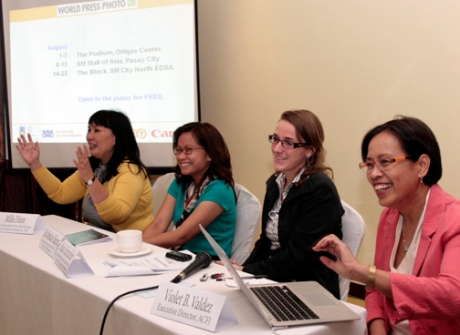
Organizers of the World Press Photo Exhibit 2008 in Manila answer questions from the members of the media in a press conference held 18 July in Quezon City. From right: Violet B. Valdez, executive director of the Konrad Adenauer Asian Center for Journalism at the Ateneo de Manila University; Paula J. Schindeler, second secretary for Economic and Cultural Affairs of the Embassy of the Kingdom of the Netherlands; Jika Mendoza-Dalupan, corporate relations director of Unilever Philippines; and, Millie F. Dizon, vice president for marketing and communication of SM Supermalls. Photograph by Jimmy Domingo
Saving journalism July 27, 2008
Posted by luzrimban in journalism.1 comment so far
Here’s something Dana Batnag wishes to share with everyone. It’s from a blog called My heat’s in accra, written by Ethan Zuckerman. This blog entry ponders the misgivings some journalists have about the future, and where those worrie are coming from.
It sounds awfully familiar.
There’s nothing like a meeting on the future of journalism to get you concerned about the future of journalism. While there are some brilliant and exciting ideas discussed at conferences like the Knight Foundation-sponsored meeting I attended yesterday, there’s also a very clear sense that some of the very basic questions surrounding the future of journalism remain unanswered. The biggest of those questions seems to be, “Who’s going to pay for it?” and I’ve not heard any very compelling new answers to the question lately.
Unfortunately, there’s still at least two strands of conversation that seem impossible to avoid at thee events, one cyberskeptic and one tech-utopian. The cyberskeptic strand is insistent on reminding us that blogging won’t replace journalism, that very little blogging is journalism and that we must continue training professional journalists. All true, but this argument often misses the point that the bloggers who do engage in journalism are often our best hope for high-quality, insightful, profesional journalism in the future, and that there need not be a wall between the two worlds. Many newspapers seem to be getting this, incorporating staff and citizen blogs into their coverage, and it surprises me that this conversation continues at these sorts of events. (Then again, maybe I’m too optimistic. Mark Glaser’s latest column suggests that journalists may be fleeing newsrooms because change isn’t happening fast enough.)
Read the full blog entry titled “Saving sections of the daily newspaper.”
Welcome, new grads/alums July 23, 2008
Posted by acfj in ACFJ, ACFJ alumni.3 comments
Le’ts welcome into the Ateneo ACFJ Alumni Association the March 2008 graduates of the M.A. Journalism program. Welcome, Erwin Oliva, Nanette Guadalquiver, Marie Antonette Pacheco and Cedelf Tupas from the Philippines, Joshua Wong from Malaysia, and Huynh Cam Tung from Vietnam.
Erwin is also from the inquirer.net and has in fact joined the discussion on the future of journalism in the multimedia age.
Welcome, friends!
The survival of the specie: Dana’s take July 23, 2008
Posted by acfj in journalism.2 comments
We’re posting on our front page another reflection on the whole issue of the future of journalism. This is from Dana Batnag, originally in reaction to Zaky Yamani’s concerns.
It all started with the talk Leo Magno gave at the 3rd Forum of Emerging Leaders in Asian Journalism, and his rejoinder to some comments. Incidentally, Leo has replied to Zaky as well as to Vanitha Nadaraj.
Below is Dana’s take:
Here’s my two cents’ worth:
First, i would be happy if journalism becomes a hobby, because that means everyone finally has a voice. Not only that, it also means that people are finding the strength and the will to engage with others and to voice their opinions, which should strengthen popular democracy.
Second, we’re professionals. We’re trained and we have skills. I really don’t know what my boss thinks of me (and there are days when I’d rather not know), but I would like to think that I’m not totally worthless to the company. Some of us — especially the senior ones — might be overpaid, but our skills are still worth something in the marketplace, and I think we will always find a job – although it may not pay as much as we want. Also, one of the speakers showed the difference between a story written by a trained journalist (although new to multimedia reporting) and another done by a hobbyist, and of course the reporter did a better job of it.
Third, this is the reason why we have to keep on training and studying — because the marketplace is changing, and there are always younger people out there who are better trained and who are willing to work harder. That is a reality not only for reporters, but for everyone, regardless of the profession involved.
Fourth, while multimedia is much more demanding — I really can’t hold a videocam and take notes at the same time — it allows our readers to see for themselves what really happened. It takes out the gatekeeping function of the reporter because the videocam gives readers and viewers the raw data. I think this is good because it allows people to check if reporters have been biased or even wrong in their reporting. In the end, I think people will still choose a good, well-written story instead of the 2-minute video clip (unless it’s a demonstration of something, like a computer).
I’m not sure about this — everyone, please correct me here — but I think one attraction of multimedia to viewers is that it lets readers and viewers see and think for themselves. It presents different sides of the story, in a way that the written news has not been doing lately.
Zaky’s concerns July 22, 2008
Posted by luzrimban in ACFJ, journalism.Tags: ACFJ, Zaky Yamani
6 comments
Zaky Yamani has some questions for Leo, which he sent in as a comment to the post “A piece of Leo’s mind.” But it’s a long piece, so we’re posting it here as a separate entry to this blog.
Zaky raises several points that I’m sure are uppermost in the minds of many of us who are used to single-media, rather than multi-media reporting. Do we give up the depth of single-media reporting, and shift to the (sometimes) shallow but speedy multi-media reporting?
Here’s Zaky’s reply to Leo;
I tried to understand what Leo said about journalism today. I believe almost all of us have no doubt that journalists required to be multi-skilled and multi-tasked, and of course have to be familiar with multimedia culture. But I have some questions for Leo, and maybe for others.
Here are the questions (Well I try my best to articulate my questions):
1. With all these fast-changing technologies, the changing of social and cultural values (and also behavior), the changing situation of global economy, the changing of media culture (and also behavior of media owners, journalists, etc), will media company and journalism as a profession survive?
2. With the emerging force of citizen journalism and citizen journalists (the notion that have been caught by media owners –at least here in Indonesia– to get and to deliver news stories without paying the journalists who wrote or reported it), will we, journalists who chose this profession to make a living, survive?
3. As one of multimedia culture products, that news stories have to be delivered in fast, ultratight writing and editing or in other words produced instantly, will in-depth reports or investigative reports still in journalists or media owners’ minds
Maybe I sound skeptical about media and journalism situation today. This is because I’m concerned about the future of this profession. I read some articles in Washington Post, International Herald Tribune, or The New York Times, that described how journalism affected by globalization, and of course by global economy.
A piece of Leo’s mind July 22, 2008
Posted by luzrimban in ACFJ, journalism.Tags: ACFJ, journalism, Leo Magno
5 comments
Here are a few words from Leo Magno, whose talk at the recent 3rd Forum of Emerging Leaders in Asian Journalism/Ateneo-ACFJ Alumni Homecoming elicited hoots and howls and generated some discussion among us alumni. (Actually it’s good because it makes us think of the future of the profession and of journalists).
This was written originally as a comment, but I’m posting it as an entry for everyone to read. My comment to Leo: you make me sound so ancient! In the words of Werner vom Busch, a “dinosaur.” But at least I know how to blog. Anyway, here’s a piece of Leo’s mind:
i also failed to mention during my talk that, yes, our entry-level reporters (the multi-skilled, multi-platform ones we are getting for the first time), also DO get compensated better than our counterparts in print and even some from TV
so yah, the passion is there, they are flexible and yes, they are remunerated well
THAT is the passion i speak of — from a new breed of journalists who were already multimedia and multi-platform even before they were hired, and so they do get paid well (the last 6 reporters we hired were such people, but one of them didn’t make the cut, it’s the harsh reality we have to face — that our needs are very specialized and not everyone will make it)
it would be harder to, say, hire a reporter working for X number of years whose salary has already skyrocketed in his/her previous media organization and then train that person against his or her will and demand to just write and get the pay he/she has already been accustomed to
whereas, the passion i speak of in our new hires is already existent since they work with multimedia in their daily lives — via blogs, youtube and the like. they were born in the Internet generation, the Internet was already there and, for them, is now like pen and paper was to us
Alumni Association July 18, 2008
Posted by luzrimban in ACFJ, ACFJ alumni, Ateneo.1 comment so far
The last session for the 3rd Forum of Emerging Leaders in Asian Journalism was the Alumni Association meeting during which we did the following:
1. agreed to have an alumni network on Facebook (which has been accomplished, thanks to Vasana).
2. elected Jofelle Tesorio as chair/president, replacing KY Pung.
3. gave ourselves until Aug 25 to draft the alumni association charter (attn: Vasana, our alumni lawyer).
4. renamed the group: Ateneo ACFJ Alumni Association
Here’s a picture to remind us of that day.
